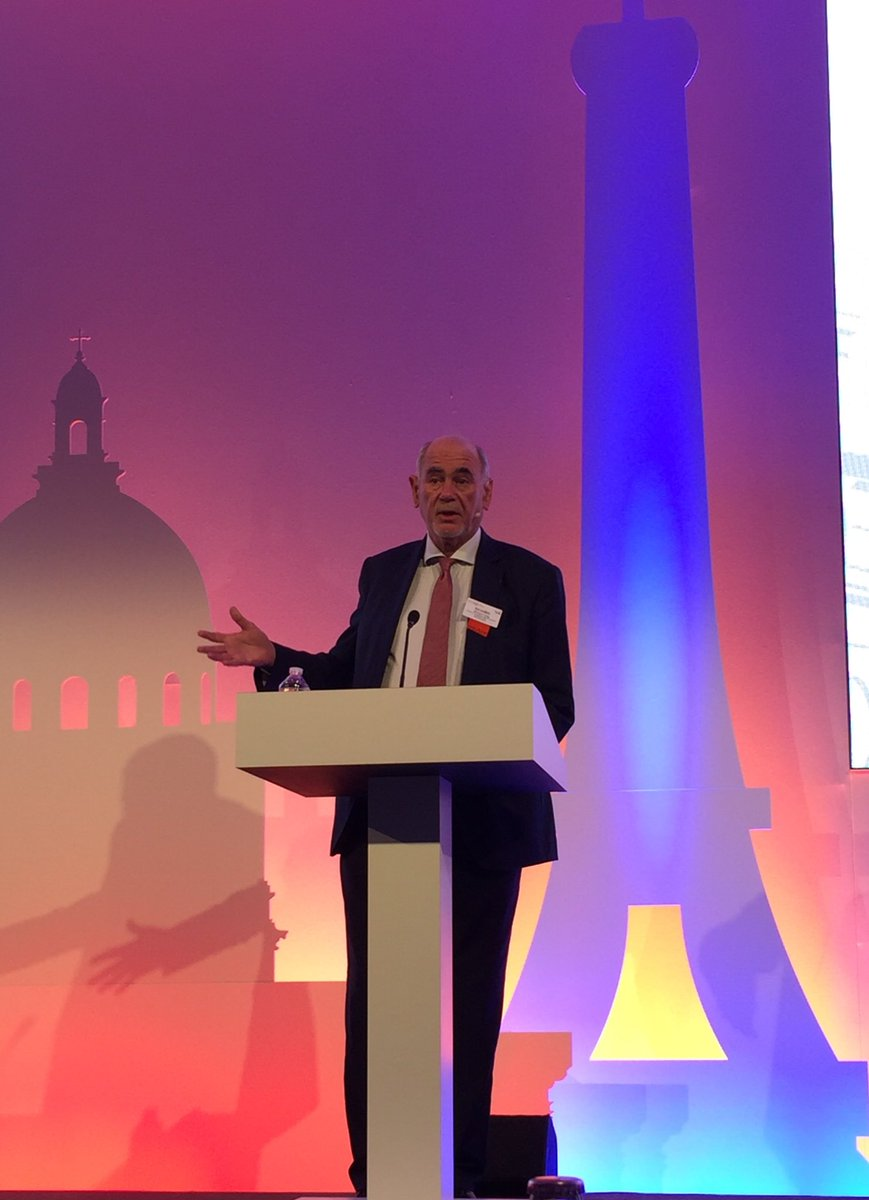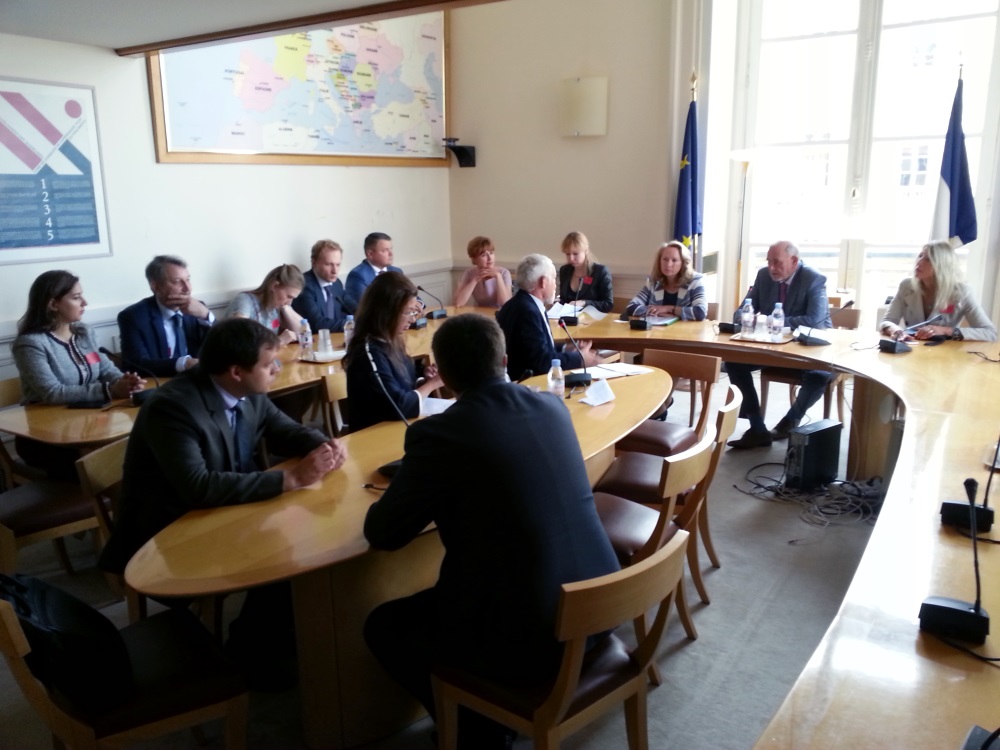Le 19 septembre, j’ai prononcé un discours à l’occasion de l’ouverture de la conférence annuelle de l’association MARQUES.
Créée en 1986, MARQUES est une association européenne qui représente et défend les intérêts des titulaires de marques. Elle est actuellement présidée par Gregor Versondert (Procter & Gamble).
Cette année, la conférence avait pour thème « Branding Style: Appearance, Aesthetics and Éclat ». Elle a réuni pas moins de 900 participants.

Vous trouverez, ci-dessous, la synthèse ainsi que le texte de mon intervention.
Mr Richard Yung, Senator representing French citizens established outside France and President of the National Anti-Counterfeiting Committee (CNAC), was the first speaker at this year’s MARQUES Annual Conference in Paris.
Senator Yung discussed the roles that brands play in guaranteeing quality and prestige, and the contribution they make to the European economy. He also noted how they can supplement or substitute other forms of protection, such as geographical indications, citing the example of espadrille manufacturers in the Basque region of France.
But the Senator noted that there are several threats to brands. These include plain packaging for cigarettes, introduced in France in January 2017, which he said “creates a dangerous precedent” and “is a drawback”. Other areas of concern he mentioned were Brexit, and the hijacking of brands on the internet by keyword advertisers. “It is urgent we take action on this,” he argued.
Finally, Senator Yung said he would like to see an IP Court created in France similar to the IPEC in the UK, to facilitate SME access to justice and simplify resolution of small disputes.
Ladies and gentlemen,
First of all, I want to thank the association MARQUES for their invitation. It is an honour and a pleasure to speak to you this morning.
A few days ago, the French daily Le Figaro published an article entitled “These brands that you pronounce without knowing it”. It shows, if it was still necessary, that brands are part of our daily lives, so much so that some of them have become French common names. This is the case, for example, of Frigidaire, Botox, Caddie, Chamallow, Tupperware, Sopalin and Kleenex.
In this respect, I observe that few French brands are among the brands that have replaced common names. This observation is all the more surprising as many of our country brands enjoy an international reputation.
France is, indeed, a country of brands. Every year, more than 90,000 brands are registered with the INPI. The EUIPO’s registry also includes many European brands of French origin.
France is also one of the most beautiful brands in the world! Since 2010, the Pro France organization is in charge of promoting it – with more or less success – thanks to the label “Origine France garantie”.
Like the France brand, the trademarks, commercial or service brands convey a story and an imagination. They represent benchmarks for consumers, who see them as the guarantee of a certain quality, even a certain prestige. Brands are also a key component of the value of companies, which is increasingly based on intangible assets. This is the logical consequence of the tertiarization of our economy. It is sometimes difficult to evaluate the weight of intangible assets. Some believe that the brand represents, on average, 18% of the value of a company. Its importance should not be neglected by those who create companies, starting with the creators of technology companies, who sometimes focus their efforts on the protection of their inventions and neglect the protection of their brand. Still, the brand is an essential link in the economic success of a company. In particular, it makes it possible to value investments in R&D and innovation.
In addition, brands contribute positively to the European economy. According to a report published in 2016 by EUIPO and the EPO, the sectors that have an extensive use of brands generate 21% of all jobs in the EU and 36% of the EU GDP. They are also high exporters. In 2013, the EU had an external trade surplus of 14.5 billion euros in these sectors, which, in addition, offer wages 48% higher than those offered by other sectors. In France, they generate 18% of all jobs and 35% of GDP.
Brands occupy such an important place that they sometimes constitute an alternative to protection by other intellectual property rights. The collective brand can thus be a substitute for protection by a geographical indication. For example, manufacturers of espadrilles in the Basque province of Soule, who, having not obtained a GI, wish to reactivate the Mauléon brand, which is already on the INPI register. The three-dimensional brand, for its part, constitutes an alternative to protection by the model. To take just one example, the company Opinel asked for and obtained the registration of a three-dimensional brand for its knife No. 8, the model of which could not be filed with the INPI.
I would now like to discuss the threats that brands face.
The introduction of the neutral pack of cigarettes creates a dangerous precedent. In 2015, I strongly opposed this measure and tried to convince the previous government that a brand is not just a name. In the Senate, an amendment I had introduced was approved to substitute a strict transposition of the 2014 directive to the neutral package provision. It was later restored by the National Assembly before being declared constitutional.
Since 1st January 2017, only neutral packs of cigarettes are allowed for sale. In addition, advertising for tobacco products is prohibited at the point of sale. The result is that figurative marks related to tobacco products are no longer allowed!
The breach opened by the neutral pack of cigarettes must be plugged as soon as possible. To that end, it is important to remember that neutral packaging presents a risk of distortion in competition. In the absence of a distinctive sign, the recognition of brands is based on their prior reputation, which ensures a premium for dominant brands and prevents the arrival of new players.
Another threat is the hijacking of brands on the Internet. My attention has recently been drawn to this practice, which is similar to unfair competition or parasitism. As you know, the most famous form of “brandjacking” is the purchase, by an economic actor – most often an online comparator – of a brand that does not belong to it through the Google Ads auction platform. The goal is to take advantage of the brand’s reputation in order to attract customers and take commissions. As a result, the victims are forced to buy their own name on Google Ads. This is not acceptable! It is urgent to put an end to this practice by neutralizing the ECJ case law, according to which the system put in place by Google does not infringe the right of the brands (the search engine “cannot be held responsible” for the keywords purchased through its auction platform).
Brexit is also a source of concern. The position of the Commission’s Chief Negotiator is very clear: “Brexit must not lead to a loss of existing intellectual property rights”. The draft Withdrawal Agreement provides that the holder of an EU trademark registered before 31st December 2020 will become the owner of a British trademark. In addition, those who have simply applied for registration of an EU trademark before 31st December 2020 will have – for 9 months from the end of the transitional period – a priority for filing a trademark, while retaining the date of registration of the EU trademark. These provisions have already been agreed by the negotiators. On the other hand, there is still uncertainty about how to convert EU registered marks before the end of the transitional period. Will it be automatic and free? More than one million EU brands are potentially concerned. Other questions arise, including whether the United Kingdom will transpose, before leaving the EU, the Directive to approximate the laws of the Member States relating to trade marks. This question is all the more legitimate since London was in favour of the so-called “Nokia-Philips” ECJ case law, which, as you know, puts an end to the possibility for the European customs authorities to retain suspected infringing goods from and to a third country that are not intended to be marketed on the EU market.
In addition to strengthening the fight against counterfeiting, the “trademark package” includes many provisions which implementation will facilitate the registration and protection of trademarks for the benefit of the growth and competitiveness of European companies, in particular SMEs. I do not need to list them. You know them all by heart[1].
Before my conclusion, I would like to return to the topic of counterfeiting. In order to combat this scourge more effectively, France has strengthened its legislation in 2014 and 2016. The law of 11 March 2014 has improved the method for establishing damages amounts. It has also expanded customs intervention capabilities. As for the law of 3 June 2016, it has tightened the penalties applicable to aggravated counterfeit offenses, which are now punishable by 7 years imprisonment and a 750,000-euro fine.
Our legislation is relatively complete. However, new initiatives are needed to strengthen the protection of trademarks and other IPRs. The fight against cyber-counterfeiting is the number one priority of the CNAC. Our goal is to involve online payment intermediaries more closely in the fight against counterfeiting in order to dry up the financial resources of websites that infringe on intellectual property rights. This is the “follow the money” approach.
In concrete terms, the CNAC promotes creating a single window to centralize the reporting of websites that massively infringe on intellectual property rights. Such a scheme has been tested by the National Gendarmerie from November 2016 to February 2017. I hope that a permanent scheme is quickly put in place. To this end, I encourage the private sector to create an information collection unit. This cell would transmit the most important files to the National Gendarmerie, which, after any further investigations, would decide whether to refer the case to prosecutor’s office or not.
Among the CNAC’s other proposals is creating an intellectual property tribunal for businesses, modelled on the one set up in the United Kingdom. The aim is twofold: to facilitate SMEs’ access to justice and to simplify the resolution of small intellectual property disputes. In the United Kingdom, the Intellectual Property Enterprise Court (IPEC) has proved its effectiveness. An evaluation report shows that its implementation instilled a new legal culture, which would probably be good to import into France.
Still with regard to the judiciary, the specialization of the civil courts should be further strengthened. For several years, I have been advocating for a ceiling of four or five – instead of ten – of the number of High Courts exclusively competent in the area of trademarks.
Finally, I wish for specialization in the law of intellectual property of a small number of magistrates. Such a reform would, in my opinion, make it possible to standardize case law, to increase legal certainty and thus to make our judicial system even more attractive.
The review by the Senate of the 2018-2022 programming and justice reform bill will be an opportunity to debate all these issues.
Thank you for your attention. I wish you fruitful and constructive discussions.
[1] Lower registration fees (replacement of the “three classes” package by a “single class” tax system); removal of the requirement of graphic representation as a condition of validity of a mark (possibility of registering as audio, audio-visual, olfactory or gustatory signs); addition of new grounds for refusal of registration and annulment of the mark (previous existence of national protections relating to geographical indications, appellations of origin, traditional specialties guaranteed and traditional terms for wines, denominations of plant variety); strengthening the opposition procedure before registration; creation of an administrative procedure of revocation and nullity; etc.


